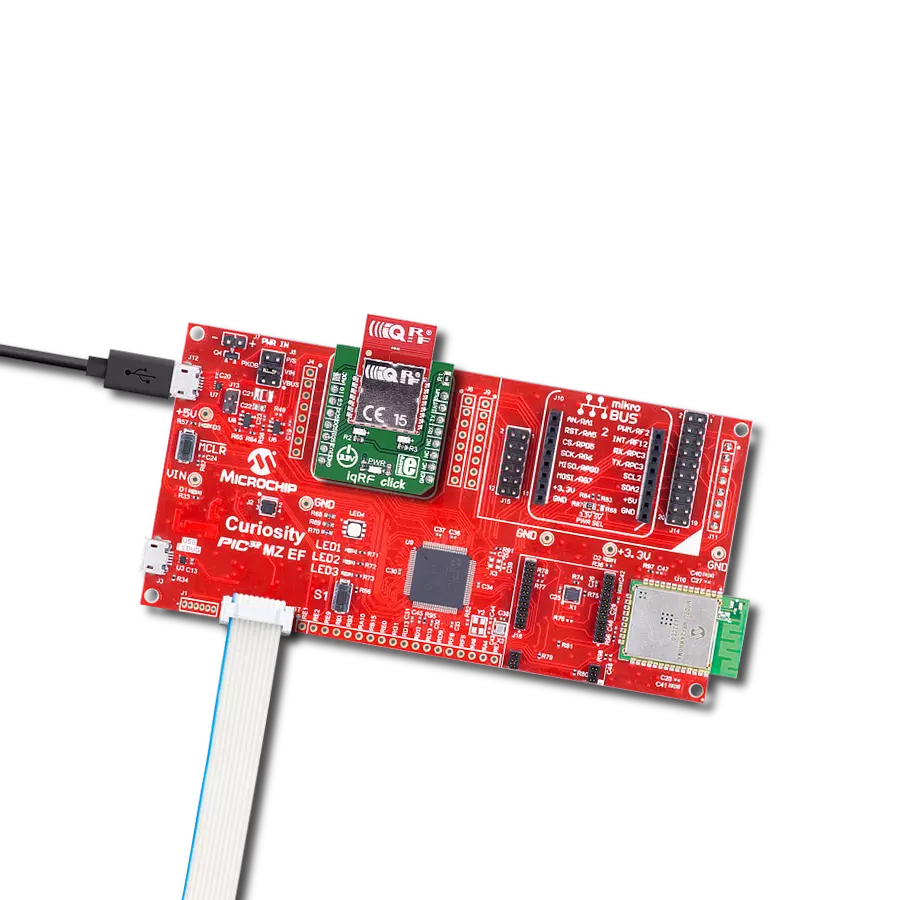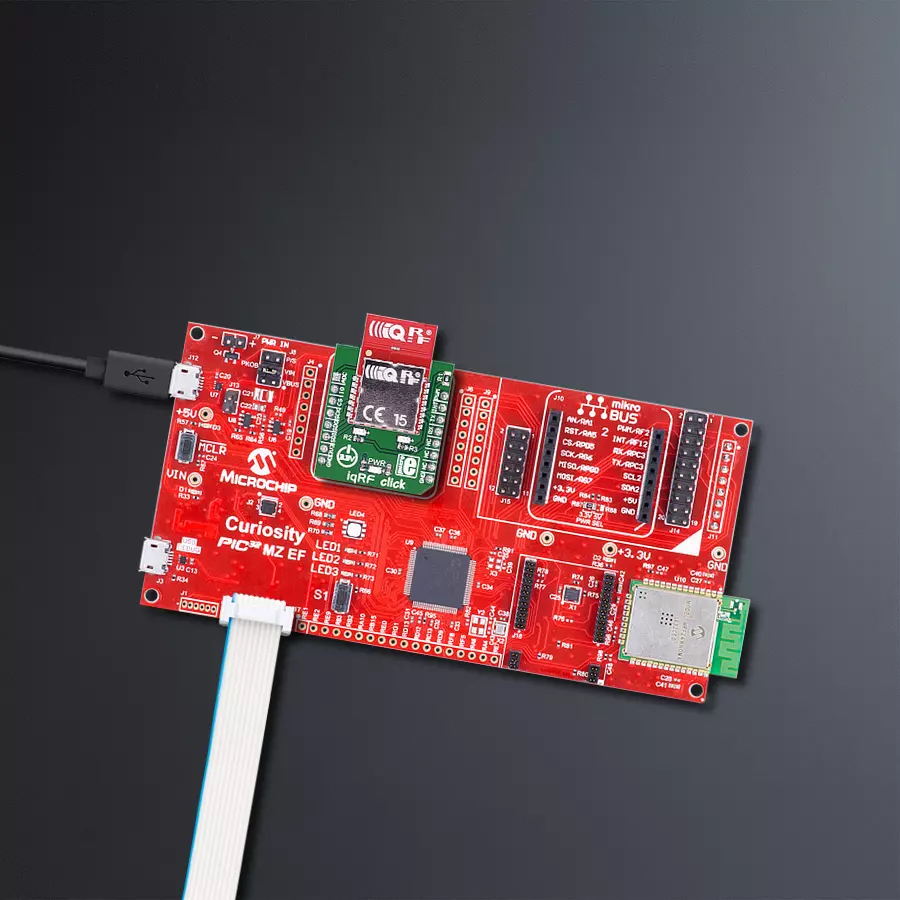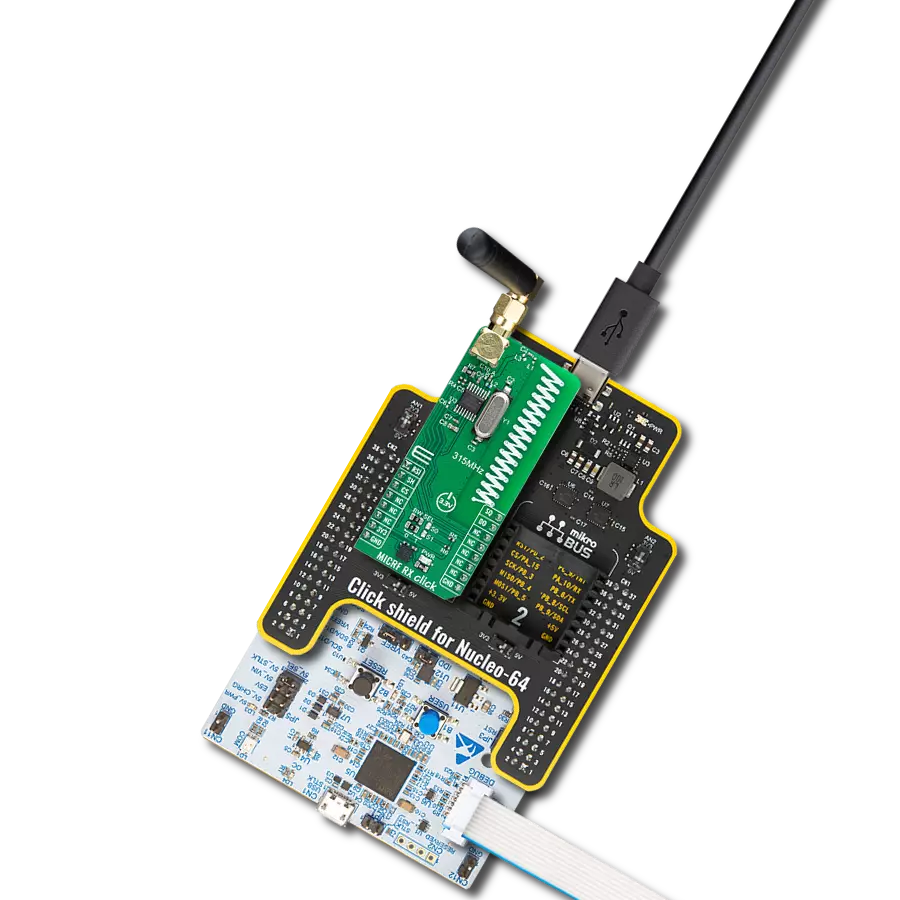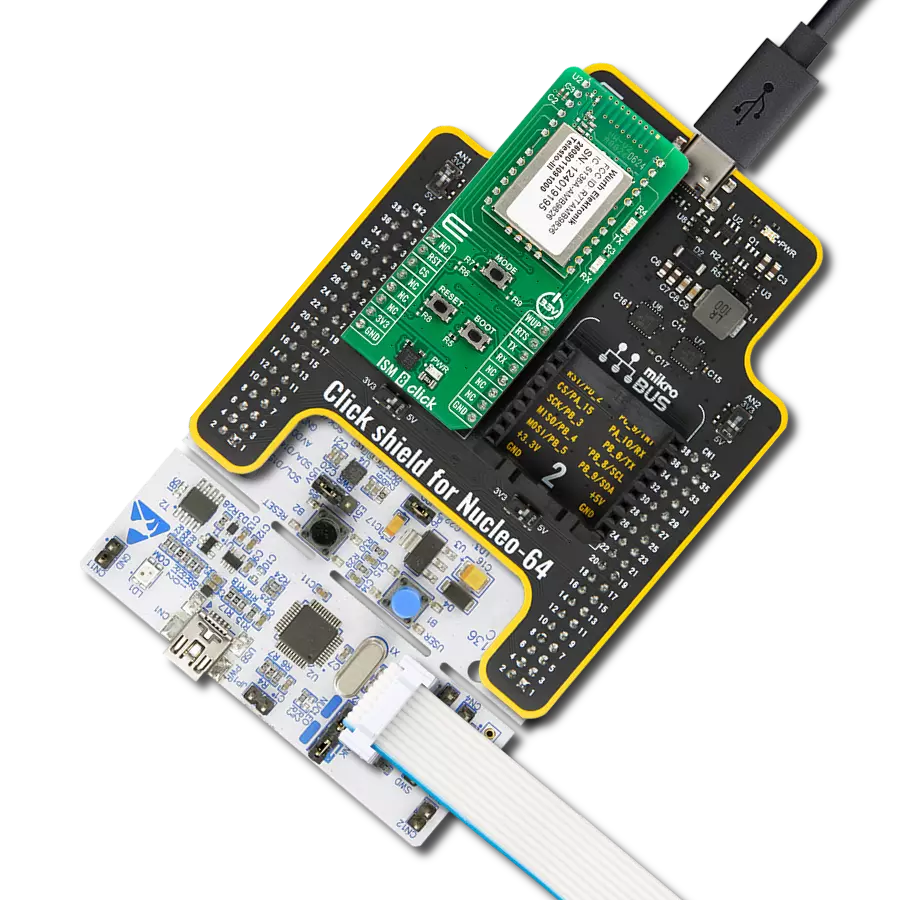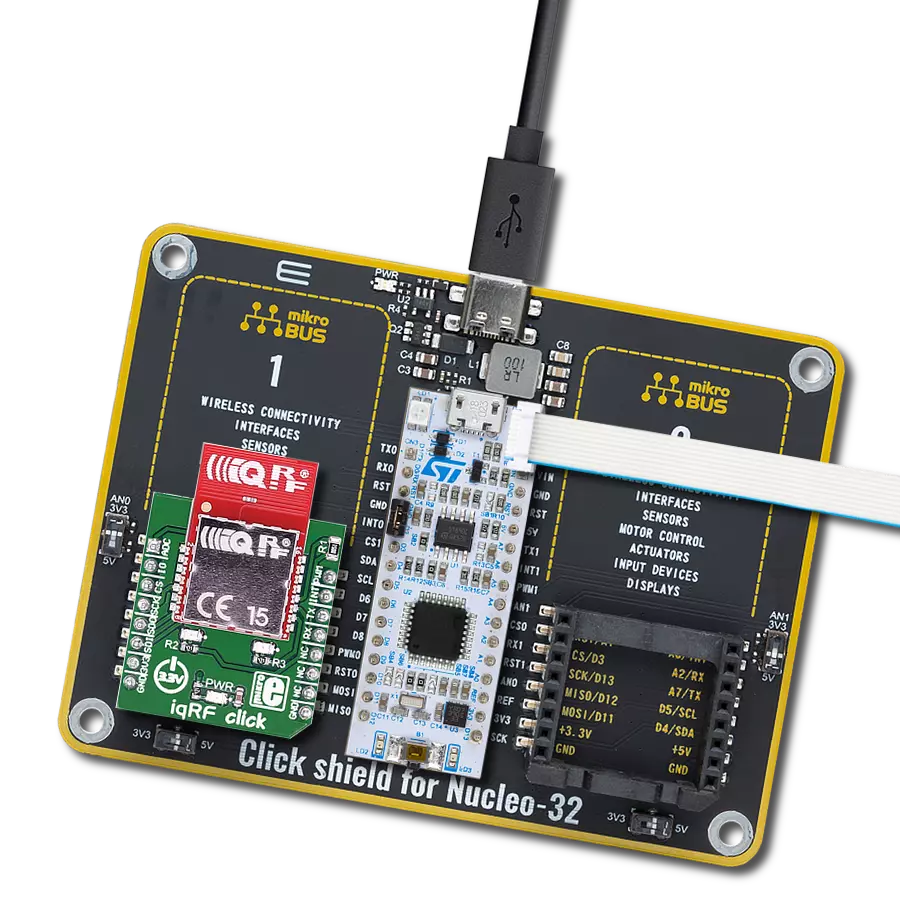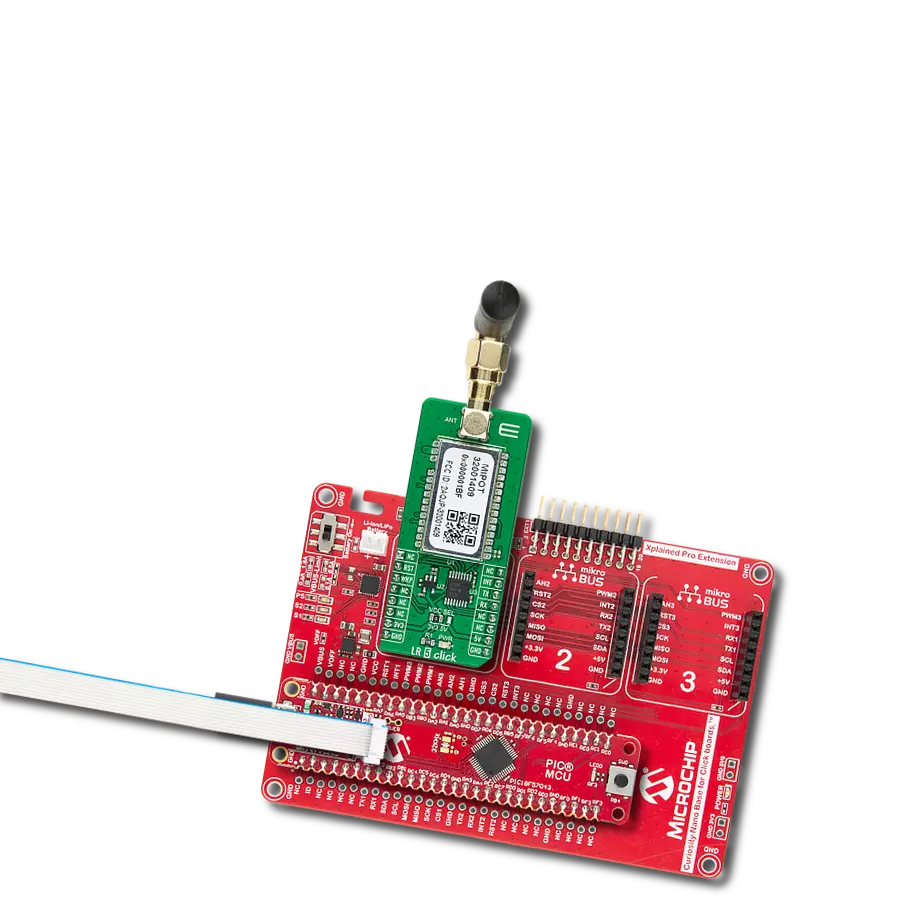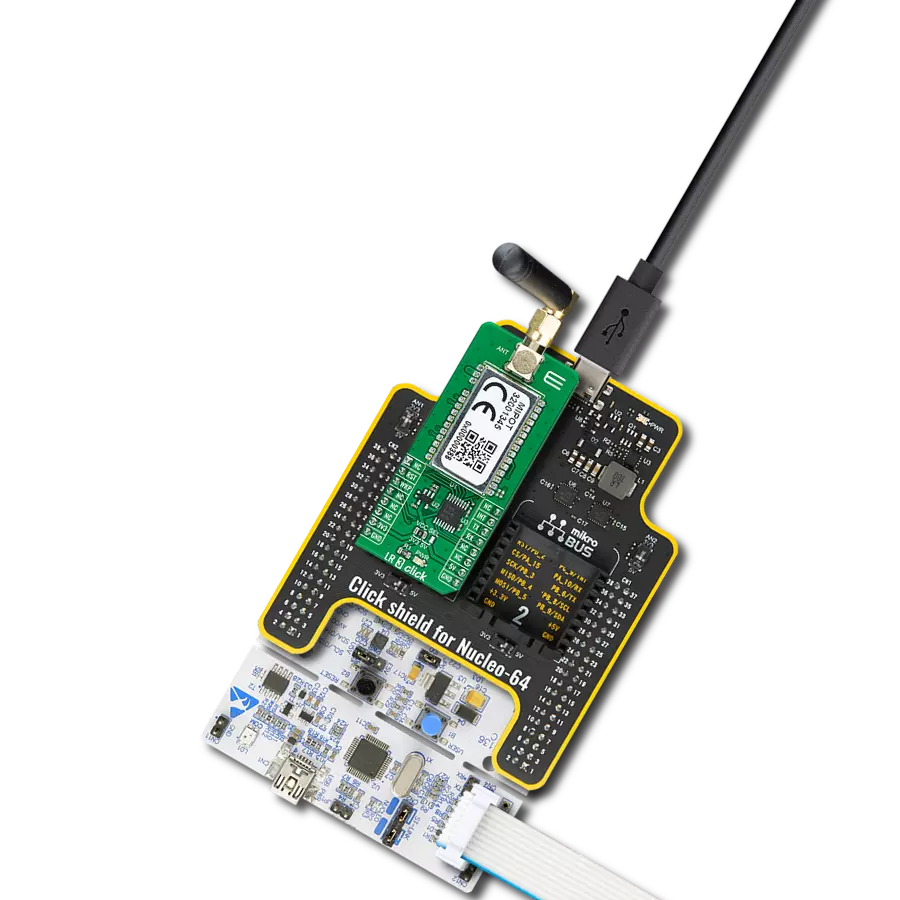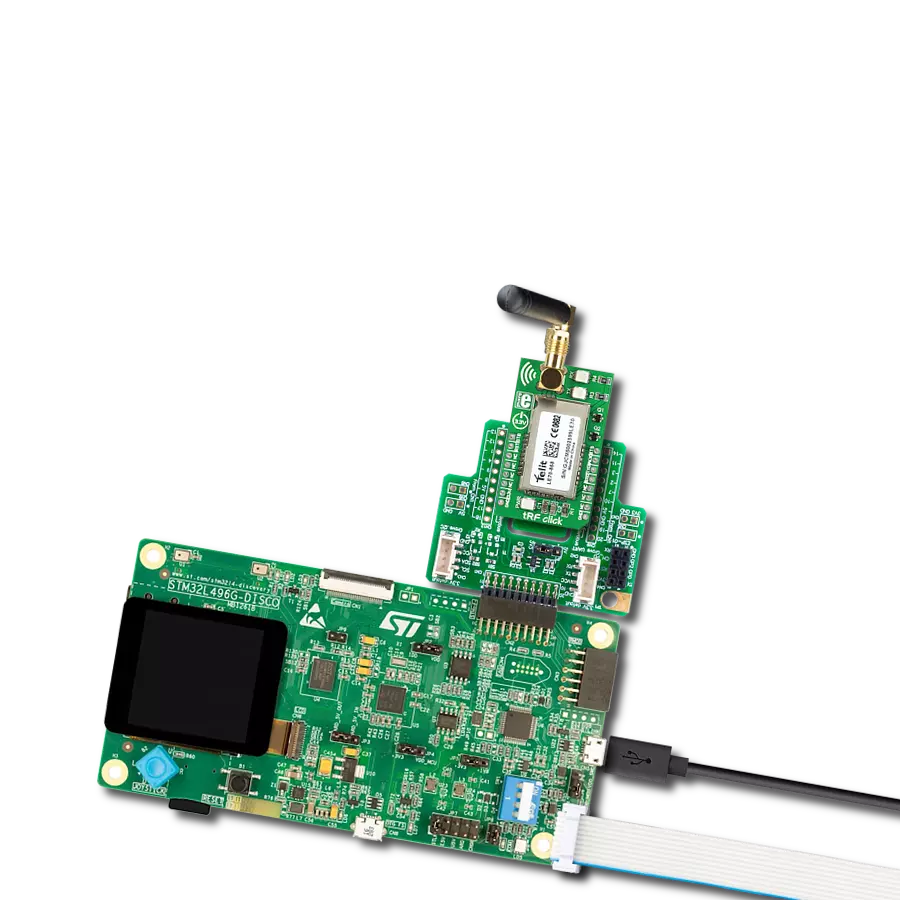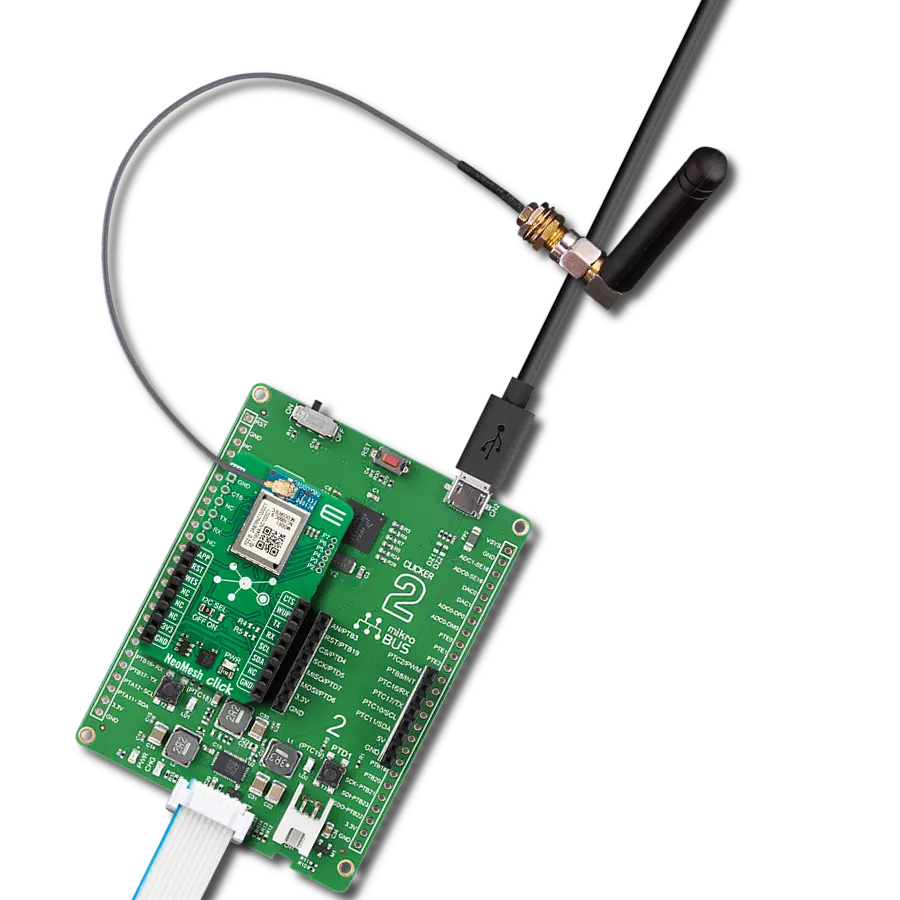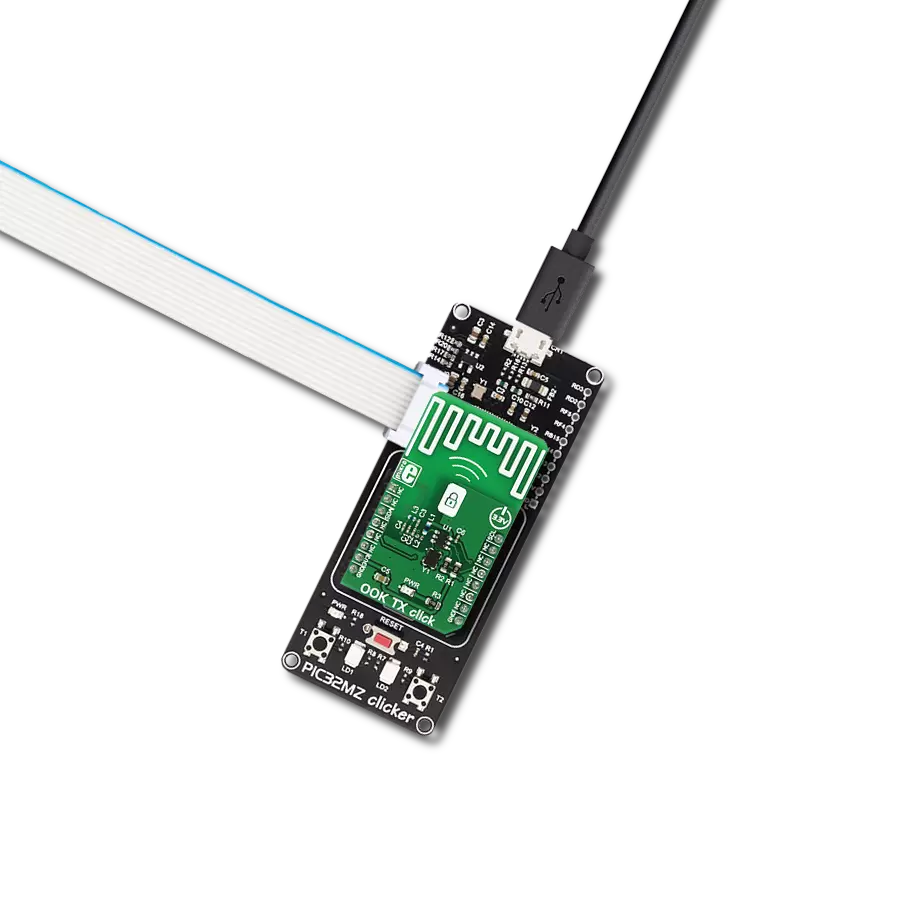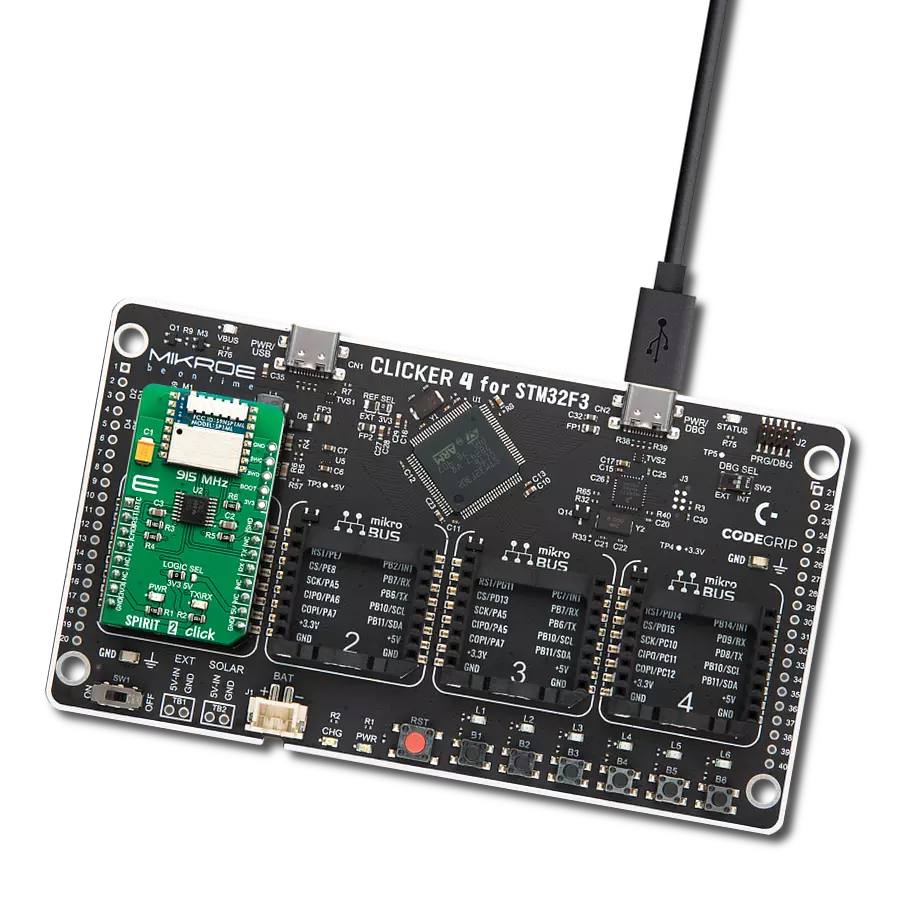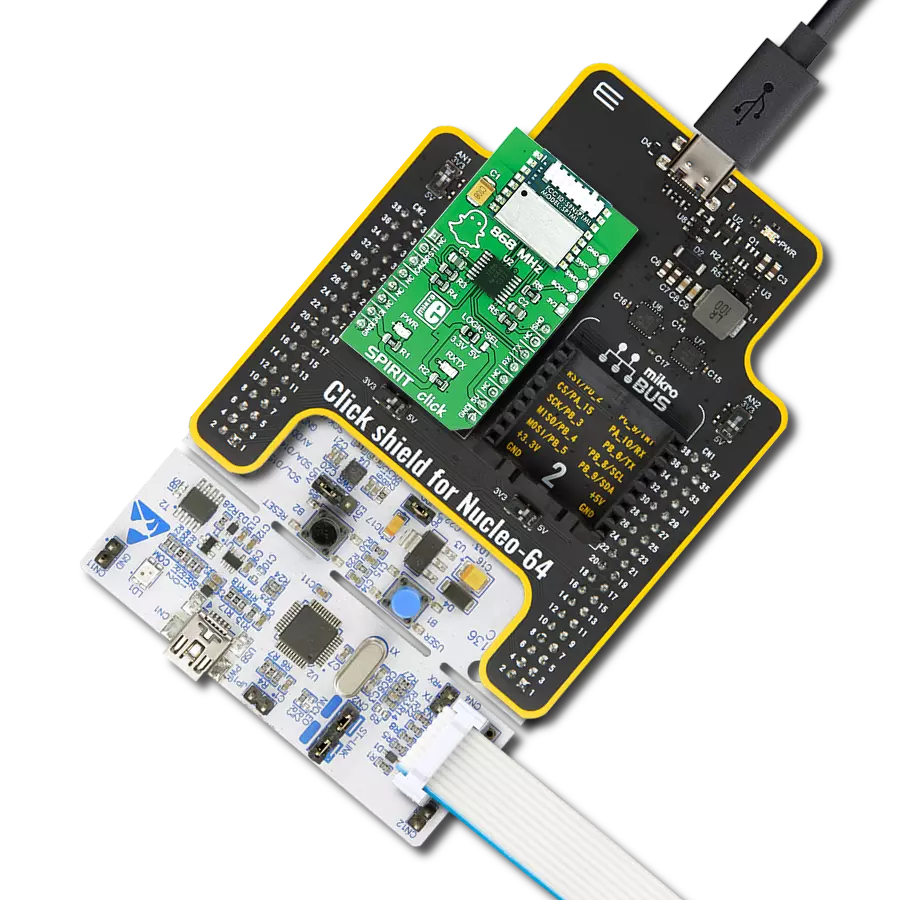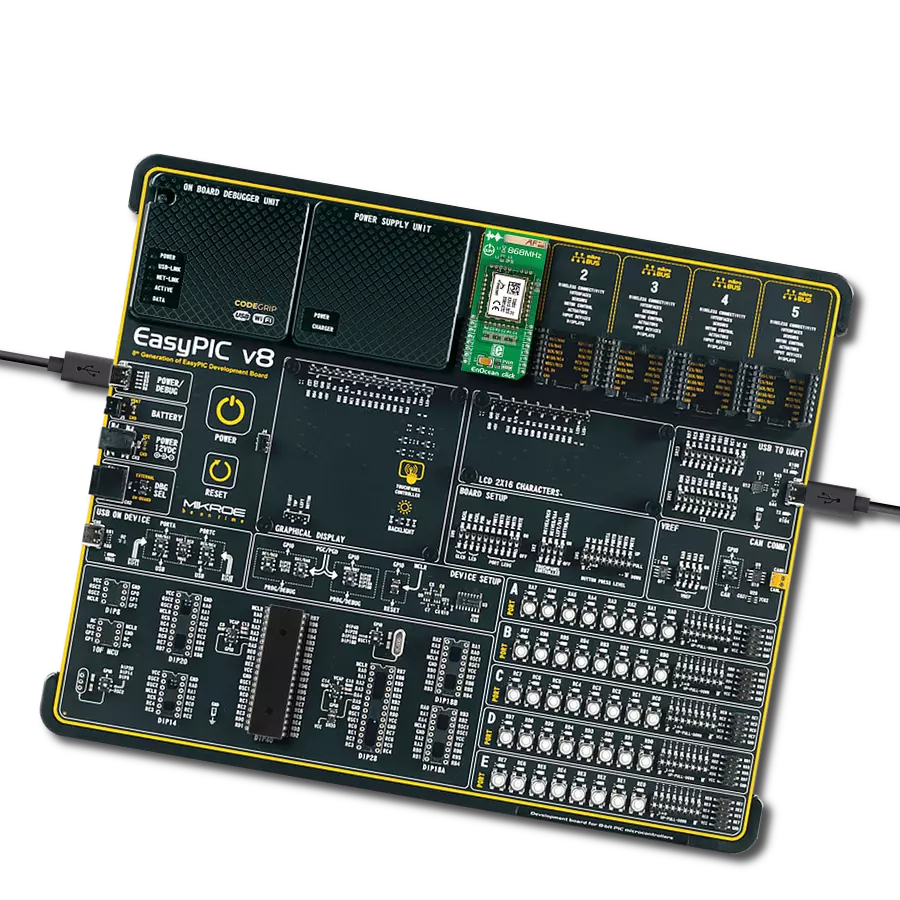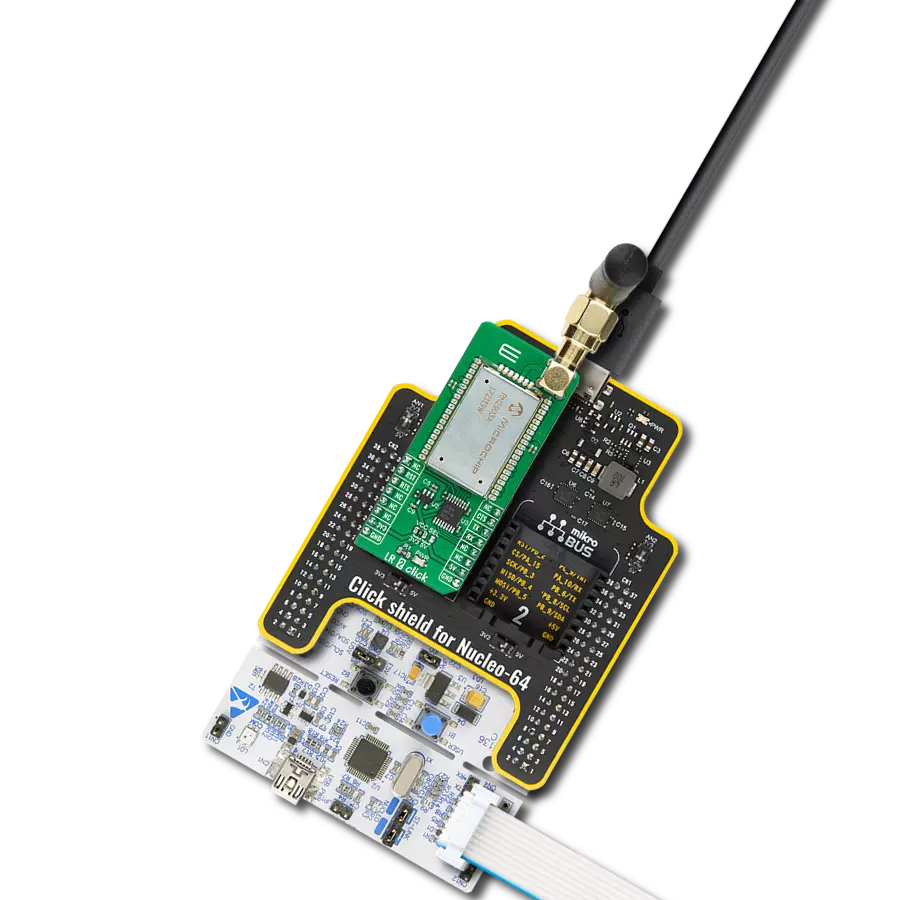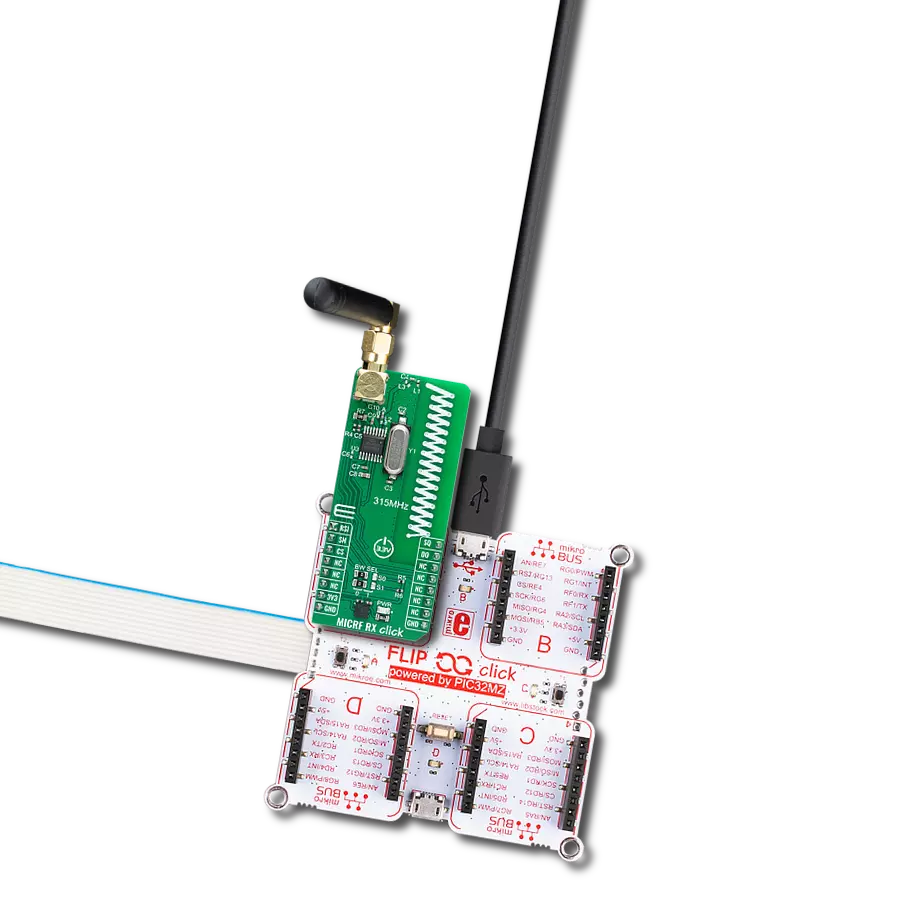Experience the next level of wireless excellence with our RF transceiver designed for the 868/916 MHz ISM band, ensuring unparalleled reliability and range for your applications.
A
A
Hardware Overview
How does it work?
iqRF Click is based on the DCTR-76DA, an RF transceiver from iqRF, operating in the 868/916 MHz frequency. The click is designed to run on a 3.3V power supply. It communicates with the target microcontroller over SPI or UART interface, with additional functionality provided by the following pins on the mikroBUS™ line: AN, RST, PWM, INT. DTCR-76DA is an RF transceiver operating in the 868/916 MHz license-free ISM (Industry, Scientific, and Medical) frequency band.
Its highly integrated ready-to-use design containing MCU, RF circuitry, serial EEPROM, and optional onboard antenna requires no external components. RF transceiver modules DCTR-72DA fit in the SIM connector. They are fully programmable under the IQRF OS operating system and allow the utilization of hardware profiles under the DPA framework. To upload application codes in DCTRs and configure DCTR parameters, a CK-USB-04A kit is intended. When
the application is uploaded to the IQRF, it can be put in the mikroBUS™ socket and communicate with it with MCU. This Click board™ can be operated only with a 3.3V logic voltage level. The board must perform appropriate logic voltage level conversion before using MCUs with different logic levels. Also, it comes equipped with a library containing functions and an example code that can be used as a reference for further development.
Features overview
Development board
Curiosity PIC32 MZ EF development board is a fully integrated 32-bit development platform featuring the high-performance PIC32MZ EF Series (PIC32MZ2048EFM) that has a 2MB Flash, 512KB RAM, integrated FPU, Crypto accelerator, and excellent connectivity options. It includes an integrated programmer and debugger, requiring no additional hardware. Users can expand
functionality through MIKROE mikroBUS™ Click™ adapter boards, add Ethernet connectivity with the Microchip PHY daughter board, add WiFi connectivity capability using the Microchip expansions boards, and add audio input and output capability with Microchip audio daughter boards. These boards are fully integrated into PIC32’s powerful software framework, MPLAB Harmony,
which provides a flexible and modular interface to application development a rich set of inter-operable software stacks (TCP-IP, USB), and easy-to-use features. The Curiosity PIC32 MZ EF development board offers expansion capabilities making it an excellent choice for a rapid prototyping board in Connectivity, IOT, and general-purpose applications.
Microcontroller Overview
MCU Card / MCU

Architecture
PIC32
MCU Memory (KB)
2048
Silicon Vendor
Microchip
Pin count
100
RAM (Bytes)
524288
Used MCU Pins
mikroBUS™ mapper
Take a closer look
Click board™ Schematic

Step by step
Project assembly
Software Support
Library Description
This library contains API for IQRF Click driver.
Key functions:
iqrf_generic_single_read- This function read one byte data.iqrf_generic_multi_write- This function writes data.
Open Source
Code example
The complete application code and a ready-to-use project are available through the NECTO Studio Package Manager for direct installation in the NECTO Studio. The application code can also be found on the MIKROE GitHub account.
/*!
* \file
* \brief iqRF Click example
*
* # Description
* IQRF Click carries the RF transceiver, operating in the 868/916 MHz frequency.
*
* The demo application is composed of two sections :
*
* ## Application Init
* Application Init performs Logger and Click initialization.
*
* ## Application Task
* Checks if new data byte has received in RX buffer ( ready for reading ),
* and if ready than reads one byte from RX buffer. In the second case,
* the application task writes message data via UART. Results are being sent
* to the Usart Terminal where you can track their changes.
*
* \author Mihajlo Djordjevic
*
*/
// ------------------------------------------------------------------- INCLUDES
#include "board.h"
#include "log.h"
#include "iqrf.h"
// ------------------------------------------------------------------ VARIABLES
//#define DEMO_APP_RECEIVER
#define DEMO_APP_TRANSCEIVER
static iqrf_t iqrf;
static log_t logger;
static const char demo_message[ 9 ] = { 'M', 'i', 'k', 'r', 'o', 'E', 13, 10, 0 };
static char rx_message[ 10 ];
static uint8_t idx;
// ------------------------------------------------------- ADDITIONAL FUNCTIONS
// ------------------------------------------------------ APPLICATION FUNCTIONS
void application_init ( void )
{
log_cfg_t log_cfg;
iqrf_cfg_t cfg;
/**
* Logger initialization.
* Default baud rate: 115200
* Default log level: LOG_LEVEL_DEBUG
* @note If USB_UART_RX and USB_UART_TX
* are defined as HAL_PIN_NC, you will
* need to define them manually for log to work.
* See @b LOG_MAP_USB_UART macro definition for detailed explanation.
*/
LOG_MAP_USB_UART( log_cfg );
log_init( &logger, &log_cfg );
log_info( &logger, "---- Application Init ----" );
Delay_ms ( 1000 );
// Click initialization.
iqrf_cfg_setup( &cfg );
IQRF_MAP_MIKROBUS( cfg, MIKROBUS_1 );
iqrf_init( &iqrf, &cfg );
log_printf( &logger, "------------------------------------\r\n" );
log_printf( &logger, "------------ iqRF Click -----------\r\n" );
log_printf( &logger, "------------------------------------\r\n" );
Delay_ms ( 1000 );
iqrf_default_cfg ( &iqrf );
Delay_ms ( 1000 );
log_printf( &logger, "---------- Initialization ----------\r\n" );
log_printf( &logger, "------------------------------------\r\n" );
Delay_ms ( 1000 );
}
void application_task ( void )
{
char tmp;
#ifdef DEMO_APP_RECEIVER
// RECEIVER - UART polling
tmp = iqrf_generic_single_read( &iqrf );
log_printf( &logger, " %c ", tmp );
#endif
#ifdef DEMO_APP_TRANSCEIVER
// TRANSMITER - TX each 2 sec
uint8_t cnt;
for ( cnt = 0; cnt < 9; cnt ++ )
{
iqrf_generic_single_write( &iqrf, demo_message[ cnt ] );
Delay_ms ( 100 );
}
Delay_ms ( 1000 );
Delay_ms ( 1000 );
#endif
}
int main ( void )
{
/* Do not remove this line or clock might not be set correctly. */
#ifdef PREINIT_SUPPORTED
preinit();
#endif
application_init( );
for ( ; ; )
{
application_task( );
}
return 0;
}
// ------------------------------------------------------------------------ END
Additional Support
Resources
Category:Sub-1 GHz Transceievers
